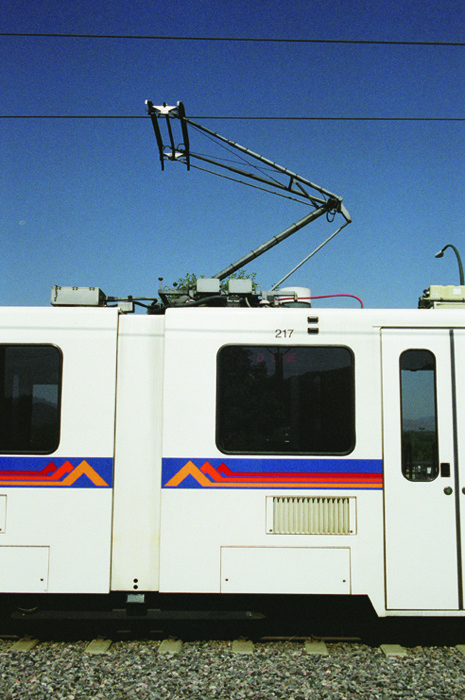Published April 2010 Vol. 14 Issue 4
by Margo Pierce, with contributions from Kimberly Gunning and Ross Evertson
photos by Adrian Diubaldo
Economic profiling treats homeless people as criminals.
In 2007, approximately 3.6 million people were homeless at some time in North America, according to a number of non-profit organizations. “Homelessness” is defined in a variety of ways, so it is impossible to paint a uniform picture of what this reality looks like, but the numbers show that homelessness has reached epidemic proportions. And looking around the country, for many communities a popular response is punishment.
 A man holds up a ticket in Denver for camping ilegaly . The ticket had no fine, but required him to go to Homeles Court.
A man holds up a ticket in Denver for camping ilegaly . The ticket had no fine, but required him to go to Homeles Court.
Published November 2009 Vol. 13 Issue 10
text by Ross Evertson and photos by Ross Evertson and Davin Risk

In any city it is incredibly easy to take for granted—or be ignorant entirely—of the things that are happening beneath us. Transportation and sewer systems, fault lines and lagoons—modern, ancient and natural catacombs of all sorts functioning and hiding below our cities.
Published September 2009 Vol. 13 Issue 8
Route 9
by Quinten Collier
Illustrations by Ross Evertson
Behind the rehab clinic and directly across the street from the work release compound, right on the dividing line between “Historic” Downtown Grand Junction with its fortress-like courthouses, octogenarian cottages and shop windows filled with irrelevancies, there lies the mute, oppressive warehouse atmosphere of the barren industrial district. Here, with the police station not a block away, amidst the street-hardened ex-cons and addicts, many with the famished eyes of those who have seen so much corrosion of the mind, body and soul they have ceased to notice anything else, with bestial tattoos like old war maps encircling their arms; here, in the desert heat that erodes the sidewalks, where 7th Street and South Avenue intersect, here is where a person looking to take the GVT (Grand Valley Transit) will find the main transfer point for busses.
I usually take the Route 9 to Clifton, a section of Mesa County composed of undernourished, deteriorating suburban neighborhoods, clustered trailer parks and stucco shopping plazas eaten by the sun. But I don’t often come to the transfer point. I did today just to see what it was like.
Published September 2009 Vol. 13 Issue 8
by Ross Evertson

All but one stop. After going all the way from ‘Aspen Grove’ in Littleton, past the Rossonian in 5-Points, and all the way down to wherever-the-heck it is at the end of the F Line—I couldn’t bear to take the last leg over to 9-Mile. While the C/D Lines briskly take you through the industrial corridor of Santa Fe Blvd, the F Line is slow, starting in a concrete valley west of I-25 and gradually turning into a tour of office park sprawl with bits of the prarie that said sprawl is consuming.
Published July 2009 Vol. 13 Issue 6
by Ross Evertson


I spent most of my time in college arguing. I went to art school, and despite the fact that I am an artist and photographer, it didn’t seem to agree with me. It was my nature then—and it still is, somewhat—to be disagreeable. I’ve been called argumentative and told that I obviously like to argue purely for the sake of it. Really though, I tend to play the devil’s advocate because it is typically more interesting and useful than simply agreeing with someone.
This project is the result of one of these arguments/discussions. Someone was waxing romantic about the connection between the photographer and his subject. This sort of mystical assumption is exactly the kind of thing that gets me excited to argue, but instead of engaging them I realized instantly what I would do instead. Five years later, I am finally working on it.
Published: April 2009 Vol. 13 Issue 3
photography & text by Ross Evertson
 Earthship designed and built by Joe Callahan of Boulder, Colorado. Photos by Ross Evertson.
Earthship designed and built by Joe Callahan of Boulder, Colorado. Photos by Ross Evertson.
I was raised in the carpet and drywall world of suburban Denver. The homes of my friends all looked and felt so similar to my own, each one was like a visit to a parallel universe (some of them even shared the exact same floor plan, and everyone decorated the same way—the primary difference was the odor, if the parents smoked, or if there was a baby). There was something comforting to the sameness at that age, but as I got older that sameness became almost depressing and it was rare for me to ever find that level of comfort in the home of anyone else, friend or stranger.
It was particularly bizarre, then, when I first stepped into an earthship. It did not look like any home I had ever been in before. Beneath the iconic south-facing floor to ceiling windows is an indoor garden, fed by greywater from the sinks and shower. The soft forms of the structure flow all around. As organic as the stucco walls feel, they are covering a traditional earthship building material—used automobile tires filled with tightly compacted dirt.
